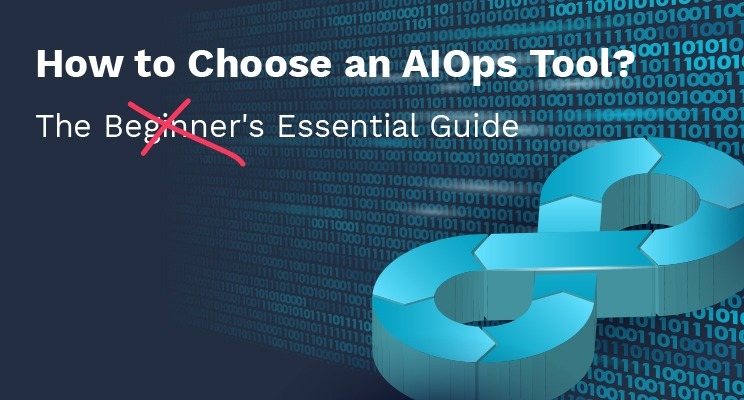Why do we need AIOps?
We all know that the shift to SaaS and next-generation container and microservices-based software architectures is inevitable as a key step in digital transformation. The forces at work speak to the need for businesses to present a purely digital shop window to their customers, and as they do so the infrastructure monitoring, once a backroom task is now a key business priority.
It is clear that SRE, DevOps and IT operations teams need new solutions though when one considers how this shift affects how people do root cause, automation and observability. To understand why — you need to understand change. Where once the IT infrastructure changed in cycles of months or years, today it changes at the pace of agile software development, building and reordering applications interconnected by self-describing and highly flexible APIs. Topology is simply something that changes the whole time, and outages are a continual drag on user experience.
With change a now permanent feature, the result is an ever-growing set of complex monitoring data sets. In order to get a strong control on your outcomes, and critically mean time to resolve (MTTR), what you need is the power of artificial intelligence and machine learning, as you react to incidents and outages in your applications. This is why your choice of AIOps tools is so important. Their promise is to bring the power of advanced algorithms to the task of incident management, helping ops teams to quickly diagnose and fix problems in real-time.
What is AIOps? How does AIOps work?
So what characterizes AIOps? We all know what the past looked like. In your monitoring tools, you would build a long list of rules describing how things fail, usually constructed over many years. AIOps does away with that, allowing the data – the events, logs, traces and metrics that characterize modern observability – to automatically dictate the root cause logic. In its ultimate form, it will treat observability data sources as a key input to the inference and detection of issues, pointing out incidents without the need to know beforehand the shape they will take.
So this is the key. Make sure your AIOps platform really is AIOps. Does it do automated anomaly detection? Does it require a long list of regex definitions or data grooming to be done before it will work? Does it require you to list all of the dependencies in your systems before it can give you insight into the functioning of your cloud-native workflows? You should ask if your vendor actually does data science, or are you back to writing rules to correlate events, or worse doing the data science yourself. You should see how the tool behaves when somebody “moves its cheese” and data formats change, dependencies shift, silos break down and applications move residency. Does it cover the whole range of observability data, and what is the quality of the actionable insights that it surfaces?
How do I know it is AIOps?
Boiling it down, you should be asking:
- Is it really AI?
- Can it handle change?
- Does it need an army of expensive consultants?
- Is the vendor’s Wizard of Oz behind the curtain, or can you make it work?
A product that ticks all of those boxes is easy to spot. You should be able to define the event correlations with just a few clicks, not hundreds of complicated rules. You should be able to own the evaluation and the deployment, not be asked for a “white glove” evaluation process. And beware of the army of consultants that you don’t see doing the configuration behind the scenes. When you are evaluating, evaluate how you set the tool up, what integrating it into your environment takes, demand to see the sausage-making machine!
What are the benefits of AIOps?
By now the advantages of AIOps should be clear to those of you battling with a modern application infrastructure and care passionately about customer experience. It is worth reflecting that the current wave of cloud and SaaS software is almost a decade more recent than innovations from established players like Splunk and ITSM vendors like ServiceNow, but modernity is just the start. Within a short time you should be seeing:
- Reduction in downtime: Ultimately it’s about the availability of your services. Because we catch more and catch earlier we give you the chance to make a change before your customers get impacted. AIOps often helps halve or more the net amount of downtime in your applications.
- Reduction in workload: A great benefit of the advanced correlation available with AIOps is a radical reduction in false alarms and elimination of noise. The wasted time chasing down pointless alerts kills SRE/DevOps/ITOps productivity. A 99% reduction in false alerts is only achievable with AIOps.
- Reduction in the cost of ownership: With rules-based systems, you are constantly tweaking the configuration of your monitoring systems. Every single change in your application infrastructure potentially requires a change to your monitoring systems. AIOps removes that dependency. It is built with continuous change in mind!
Does Moogsoft do AIOps?
At Moogsoft we have a decade-long commitment to the use of artificial intelligence for IT operations and more recently the move to SRE/DevOps. As part of that journey, we invented the AIOps market segment, filed 50+ patents and authored over 20 peer-reviewed items of academic research. Our commitment is total to the elimination of downtime and creating delight for your customer’s experience of your digital offerings. Can other vendors truly say the same?
Additional resources:
Gartner AIOps Platform Market Guide: Highlights Moogsoft as a key vendor for how organizations can use AIOps across multiple use cases to improve analysis and insights across the application lifecycle.
GigaOm Radar for AIOps Solutions: Highlights Moogsoft as an outperformer and helps IT organizations assess computing AIOps solutions in the context of well-defined features and criteria.






